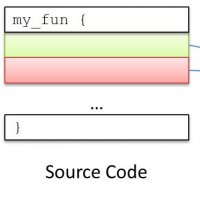It's true that some expressions are amenable to restructuring, and such restructuring might reduce the effort involved in creating test-cases for the sole purpose of achieving MC/DC. However, you should consider the consequences of restructuring code for this purpose. In the case of a simple and statement (in C):
if (a && b) {
code1();
} else {
code2();
}
You could rewrite the expression to eliminate the multiple condition as below:
if (a) {
if (b) {
code1();
} else {
code2();
}
} else {
code2();
}
Or for a different example (this time in Ada):
if a or else b then
code1;
else
code2;
end if;
becomes
if a then
code1;
else
if b then
code1;
else
code2;
end if;
end if;
Now code is being repeated, it's harder to review the circumstances under which a particular piece of code runs, and the traceability to the requirements just got a whole lot trickier.
The other thing that you might notice about the above two examples is that you haven’t reduced the number of test cases that are required. In the first version of the first example, you would need the following test vectors to achieve MC/DC:
| a | b | |
| V1 | TRUE | TRUE |
| V2 | TRUE | FALSE |
| V3 | FALSE | TRUE (or don’t care if you’re using masking MC/DC) |
(V1 and V3 test condition ‘a’, and V1 and V2 test condition ‘b’)
For the second version of the first example, you would need to test a with TRUE and FALSE, and to test b with TRUE and FALSE. This leads to exactly the same set of test cases as for the first version. A similar situation applies in the second example.

 Rapita Systems launches MACH178 Foundations for multicore DO-178C compliance
Rapita Systems launches MACH178 Foundations for multicore DO-178C compliance
 Collins Aerospace and Rapita present award winning paper at DASC 2024
Collins Aerospace and Rapita present award winning paper at DASC 2024
 Embedded Office GmbH & Co. KG and Rapita Systems announce strategic partnership
Embedded Office GmbH & Co. KG and Rapita Systems announce strategic partnership
 Control Coupling Basics in DO-178C
Control Coupling Basics in DO-178C
 Components in Data Coupling and Control Coupling
Components in Data Coupling and Control Coupling
 The ‘A’ Team comes to the rescue of code coverage analysis
The ‘A’ Team comes to the rescue of code coverage analysis
 Why there’s no standard approach for Data Coupling and Control Coupling Analysis
Why there’s no standard approach for Data Coupling and Control Coupling Analysis
 DO-278A Guidance: Introduction to RTCA DO-278 approval
DO-278A Guidance: Introduction to RTCA DO-278 approval
 ISO 26262
ISO 26262
 Data Coupling & Control Coupling
Data Coupling & Control Coupling
 Verifying additional code for DO-178C
Verifying additional code for DO-178C
 DO-178C Multicore In-person Training (Munich)
DO-178C Multicore In-person Training (Munich)
 DO-178C Multicore In-person Training (Fort Worth, TX)
DO-178C Multicore In-person Training (Fort Worth, TX)
 DO-178C Multicore In-person Training (Toulouse)
DO-178C Multicore In-person Training (Toulouse)





















